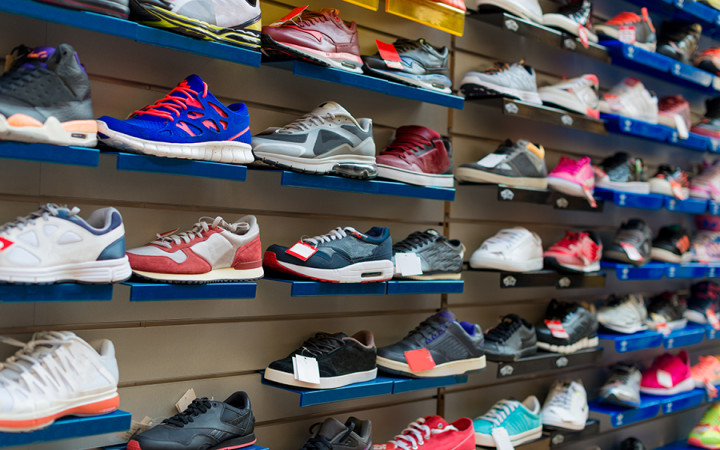Today’s Wonder of the Day was inspired by An'trell. An'trell Wonders, “Who made shoes?” Thanks for WONDERing with us, An'trell!
Do you enjoy going ? On the first warm day of spring, it's nice to feel the fresh blades of grass tickling your toes. On a hot summer day, there's nothing like the sensation of sand between your toes as you walk on the beach.
Most of the time, though, you probably wear shoes. If you're like many kids, you probably have a variety of shoes designed for different tasks. Tennis shoes work great for gym class. Flip flops make the walk from the beach to the shower easier. Hiking boots allow you to tackle tough terrain with ease.
A trip to your nearest shoe store will reveal a wide variety of shoes: running shoes, basketball shoes, soccer cleats, dress shoes, high heels, clogs, mukluks, boat shoes, work boots, and the list goes on and on. Who makes all these different shoes? Do they all come from the same factory?
Shoes date back to the earliest days of primitive man. It didn't take long walking on rough ground and rocks to figure out that some protection for the feet was necessary.
For thousands of years, shoes were crafted by hand out of natural materials, including animal skins. While it's still possible to find handcrafted shoes, they tend to be expensive and relatively rare.
Most of the shoes we wear today are mass-produced in factories for the multitude of shoe manufacturers that exist around the world. For example, shoe giant Nike primarily uses factories in Asia to make its sneakers, including countries such as China, Vietnam, Indonesia, Malaysia, Pakistan, India, and Thailand.
The exact steps of production vary by factory, equipment, material, and shoe design. Even the simplest shoe designs can require nearly 100 steps from start to finish. More complex designs can include 400 steps or more!
While shoe designs vary greatly, most shoes contain some common, basic parts: sole, insole, outsole, midsole, heel, and upper. Depending upon specific designs, shoes may also contain a lining, tongue, quarter, welt, or backstay.
A variety of specialized machines are used to manufacture all of these separate pieces and, ultimately, fit them together to create a finished pair of shoes. Despite the number of steps and materials involved, a pair of shoes can be manufactured much more quickly in a factory than by hand.
To make the shoe-manufacturing process more efficient, modern factories use a manufacturing process known as nesting, which divides up the many steps of shoe production into several different departments within the factory.
These departments usually bear names that reflect the specific tasks they perform, such as designing, cutting, machining, sewing, assembling, and finishing. While many different machines perform specialized tasks, many humans are also essential to make the process run smoothly.
Today's shoes boast a dizzying array of materials. Leather, plastic, cloth, and rubber remain popular materials. Thanks to technology, though, you'll also find advanced materials in many shoes, including ethylene vinyl acetate, polyurethane foam, and gel or liquid silicone.
Does the shoe-manufacturing process seem a bit complicated? There certainly are many steps, machines, and people necessary to produce a modern pair of shoes. But don't forget that there's one more aspect that makes things just a little bit more difficult: every shoe design also has to be manufactured in a wide variety of different sizes!




